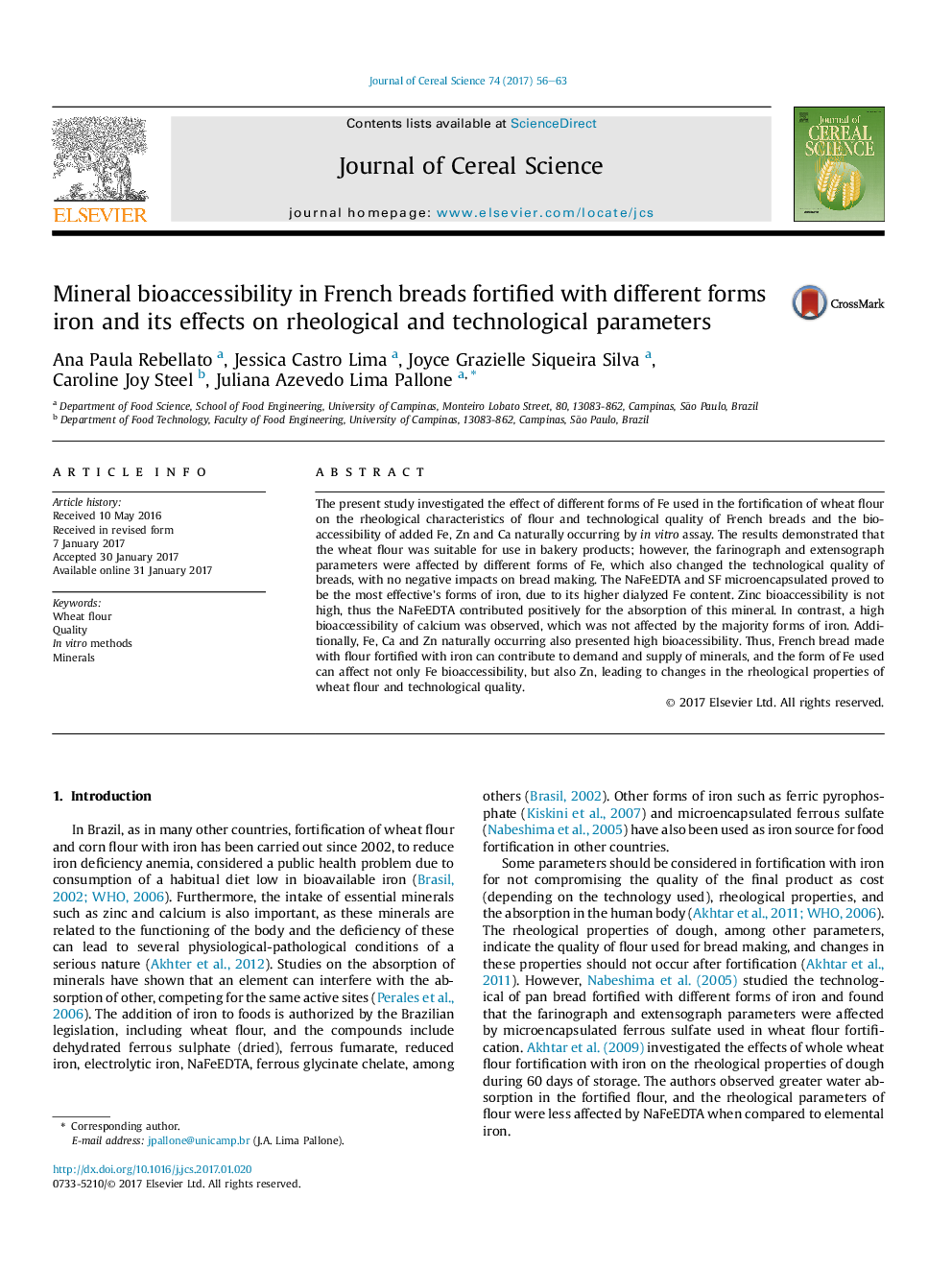| Article ID | Journal | Published Year | Pages | File Type |
|---|---|---|---|---|
| 5762443 | Journal of Cereal Science | 2017 | 8 Pages |
Abstract
The present study investigated the effect of different forms of Fe used in the fortification of wheat flour on the rheological characteristics of flour and technological quality of French breads and the bioaccessibility of added Fe, Zn and Ca naturally occurring by in vitro assay. The results demonstrated that the wheat flour was suitable for use in bakery products; however, the farinograph and extensograph parameters were affected by different forms of Fe, which also changed the technological quality of breads, with no negative impacts on bread making. The NaFeEDTA and SF microencapsulated proved to be the most effective's forms of iron, due to its higher dialyzed Fe content. Zinc bioaccessibility is not high, thus the NaFeEDTA contributed positively for the absorption of this mineral. In contrast, a high bioaccessibility of calcium was observed, which was not affected by the majority forms of iron. Additionally, Fe, Ca and Zn naturally occurring also presented high bioacessibility. Thus, French bread made with flour fortified with iron can contribute to demand and supply of minerals, and the form of Fe used can affect not only Fe bioaccessibility, but also Zn, leading to changes in the rheological properties of wheat flour and technological quality.
Keywords
Related Topics
Life Sciences
Agricultural and Biological Sciences
Agronomy and Crop Science
Authors
Ana Paula Rebellato, Jessica Castro Lima, Joyce Grazielle Siqueira Silva, Caroline Joy Steel, Juliana Azevedo Lima Pallone,
